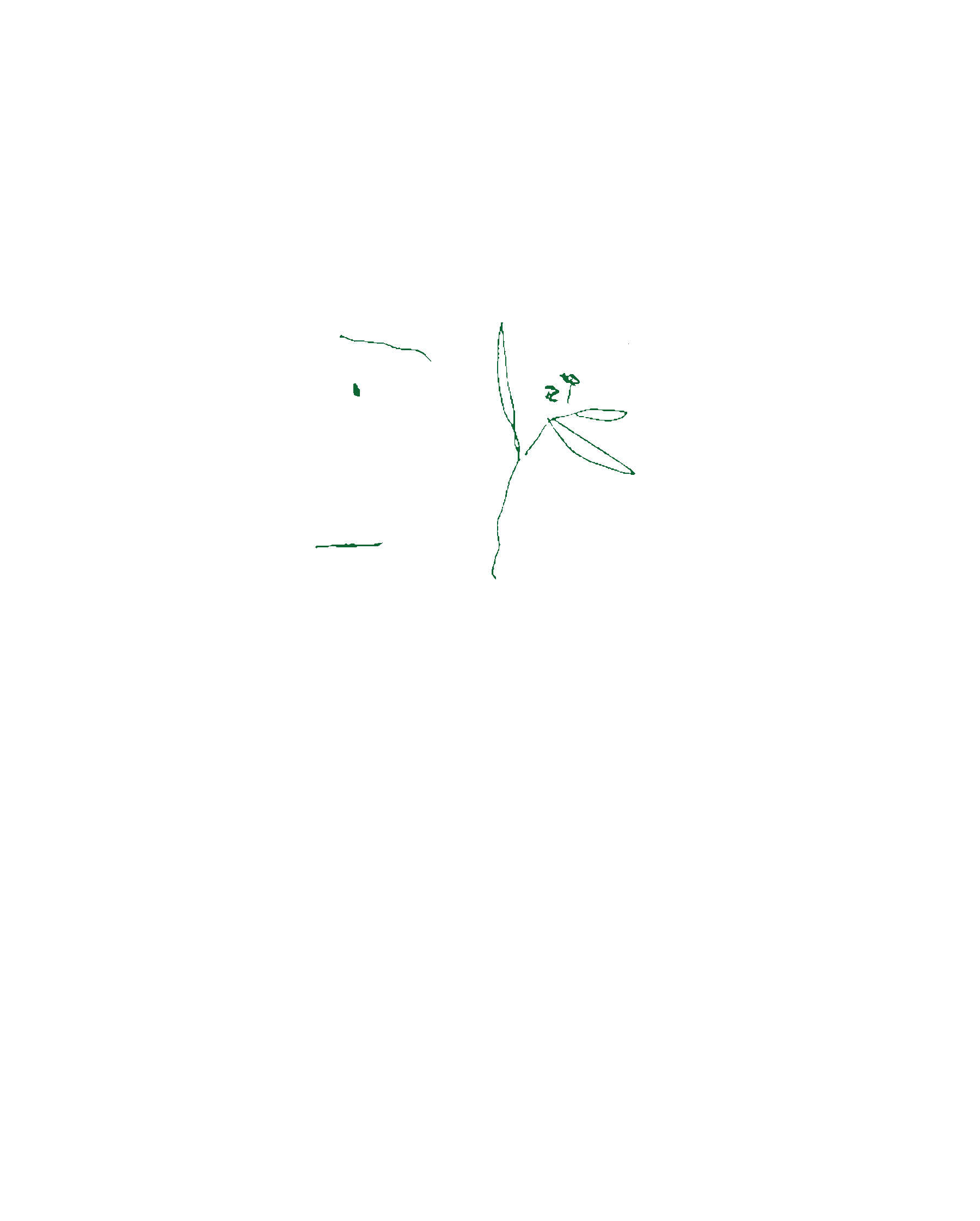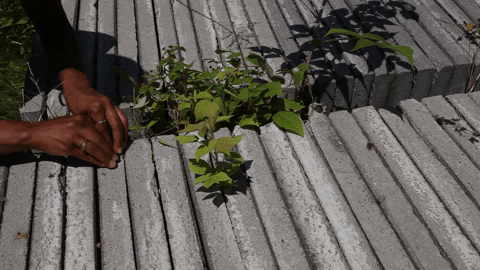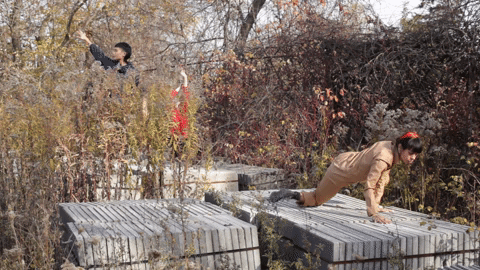Plants opportunistically reclaim spaces. Thinking through this notion, plants become active survivors in urbanity—animate matter that thrives and adapts in artificial habitats.
In the artist book And Yet My Mask is Powerful, Basel Abbas and Ruanne Abou-Rahme try to trace back routes leading to the sites of destroyed Palestinian villages. They finally find their way by following the vegetation growing there: “wild fennel leads us to what remains of the village.” (2017)
We learn to marvel in front of man-made edifices, towers, castles, homes. Yet, ultimately, they are bound to a slow dying process, slowly decaying, unless actively maintained, preserved, restored. We learn to value monuments made of stone, not only the building or the object in itself, but also as a proof of history. A history whose representation is fixed, frozen, singular, rather than constantly fluctuating and shifting, to be written and spoken from multiple points of entry. A first step towards decolonization, to move history into the plural form: histories.
Going back to the wild fennel growing in the erased Palestinian villages, what remains after all marks of the constructions that once stood there are gone, is the resisting, persistant and persisting local vegetation. Nature remains the only testament of that history. It is our witness, there long before we came, and finding ways to remain long after we depart. Histories are carried through its flux, never finite, as it grows and dies and gets reborn again.
The term third landscape, conceived by French writer/gardener Gilles Clément (Manifeste du Tiers paysage, 2004), describes the abandoned lots of land within the urban environment. These spaces can be understood as the ‘spruits’ that meander through the city, the transitional spaces between one place and another, roadsides and road islands, neglected lots of land dotted around the city, disused mine dumps, railroad embankments, and planned buffer zones. It defines miniature gaps between the pavement and the wall, the gutter clogged with organic debris, mangled sidewalks exposing soil for opportunistic plants to grow. Clément considers these plants to be claiming and creating a third space within the city, a physical and metaphorical landscape that is the genetic petri dish for urban ecology. He calls this the third landscape. But if that is the third landscape, what is the first landscape?
British gardener and writer Richard Mabey recalls becoming enraptured with the abandoned plot of land nearby his work, where weeds were left to grow and proliferate at ease : “[...] this kind of post-industrial wasteland was actually producing this growth. It seemed to say something about the obstinacy and resilience of nature.” (Weeds: In Defense of Nature's Most Unloved Plants, 2011)
"What is a weed?
Oh, what is a weed?"
- Julian Bannerman, Great Gardens: Trematon Castle, Nowness
What is a weed?
On camera, famed British gardener Bannerman asks this seemingly simple question whilst walking in his Trematon Castle garden in Cornwall, with a spiky giant Gunnera in hand, the leaves acting as an oversized umbrella over the imposing man.1Yet, he spent months removing the invasive petasites from the grounds of the garden when he first started working on it.2
Here lies the complexity of offering an answer to this treacherous interrogation. A plant is, first and foremost, regarded as a weed according to its desirability to humans in a given context. In this human-centric perspective, it is a plant that is not valued for certain of its particular characteristics and properties, making it undesirable, to be eradicated through various — often violent — methods. As the famous gardener asks us to reconsider our narrow conceptions of nature, at the core of his role, lies the desire to control and manipulate nature.
What do these plants become when growing in an alternate third space (or is it the first space)? Vegetal practices such as gardening have a long history of control and conditioning of nature as a separate, subservient non-human entity — the desire to tame it in accordance with human’s use of space.
Weeding out undesirable plants is a part of this practice. What potential then lies in relinquishing control to these undesirables? Is this ground for a rewilding revolution, a quiet resistance and decolonial utopia? To think through the question of what is a weed is to problematize the varied notions, to become conscious of the dualistic divide of nature and culture, and to break it down like a mycellic cell in a heap of soil and humus.
This collaborative multi-disciplined project, which premises itself on the idea of vegetal and human entanglements, weaves a collection of provocations, questions and investigations that explore and interrogate the multi-faceted notions of a weed through essays of images and texts using the digital landscape as fertile ground to germinate from. We agitate metaphysical soil and thread together plant provocations and metaphors. We explore the weed’s place in the construction of landscapes, botanical migration across the globe and we situate the body as a landscape.
Is a weed
A displaced plant
a plant out of place
In a not no place
Is a weed
A (vegetal) being holding ground
Is a weed
A plant negotiating concreterup
ture
s
Are weeds pushing their way out of every crack,
nature’s proof of her will to resist the human’s urge to control it?
A reminder that every built environment must exist in
negotiation — ideally in harmony — with its natural one.
Is a weed then,
A resistance to laboriously curated, easily manageable and predictable urban spaces
Weeds,
Show us how to be in the presence of discomfort, of disruptions
Is a weed
A pioneer
Is a weed the thought in our minds that make us move more vigorously
Is a weed the dance between the boundary and the threshold
Is a weed the feeling in our bodies that agitates our skin
Is a weed the song we sing when we settle to sleep
A PLANT PROLIFERATING
enabling etnlmns
nageet
STRANGLING the stuff of living
REGENERATING the stuff of living
Is a weed
A plant living in the urban human habitat
a landscape?
Is a weed
Weeds, testimonies of resilience and adaptability — their numerous seeds remaining dormant for many years, waiting for the right conditions to spring, spreading easily and rapidly in inhospitable locales —
Showing us how to develop survival mechanisms to counter
removal
Disappearance
Is a weed
a paragon
For bodies made to feel out of place
For displaced bodies
For contested bodies
For Indigenous bodies whose land rights are contested
For migrant bodies denied resources
A weed
Is a weed
Resistance
Is a weed
Resisting definition
- 1. Johnnie Shand Kydd,“Great Gardens: Trematon Castle”, Nowness, 2016.
- 2. Tim Richardson,“A Garden Sanctuary of Medieval Magic”, New York Times, September 23 2016.


